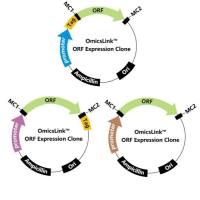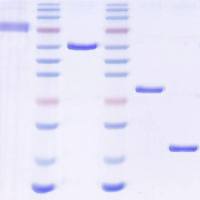Mapping Mutations with ARMS
互联网
585
Except the fact that part of T-DNA- or transposon-induced mutations can be directly identified via the T-DNA or transposon tag (see Chapters 32 –34 ) non-tagged mutations and mutations induced by chemicals or radiation need to be mapped to chromosomal regions as a first step towards their further analysis and molecular cloning. Besides classical genetic analysis exploiting the segregation of known phenotypic markers with respect to a new mutation (see also Chapter 15 ; I) several methods have been developed to achieve mapping by using molecular markers (2 –4 ). These bear the advantage that they are silent by not displaying any phenotypic expression and therefore will not interfere with the mutation itself (see also Chapters 20 –22 ). Here, a robust and cheap method for mapping by analyzmg restriction fragment length polymorphisms (RFLPs) will be described. A great number of RFLP markers on the A thaliana chromosomes is known (5–8) and continuously updated m the Arabzdopsis databases. RFLPs are codommant markers, thus well suited for mapping as they reveal either homozygosity or heterozygosity at a locus m a Southern experiment using DNA from individuals of a segregating population. However, scoring of several markers might require digestion of DNAs with different restriction enzymes revealing the polymorphisms. To simplify this analysis for an initial rough mappmg to chromosomal regions we developed an Arabidopsis thaliana RFLP mapping set (ARMS; 3). The ARMS markers are DNA fragments







